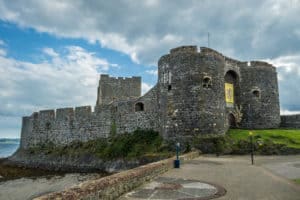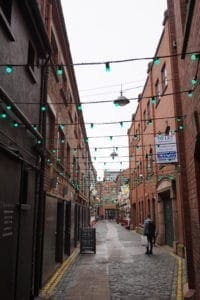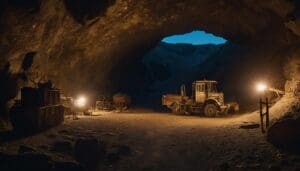The Iconic Central Park, New York: 13 Awesome Things To Do
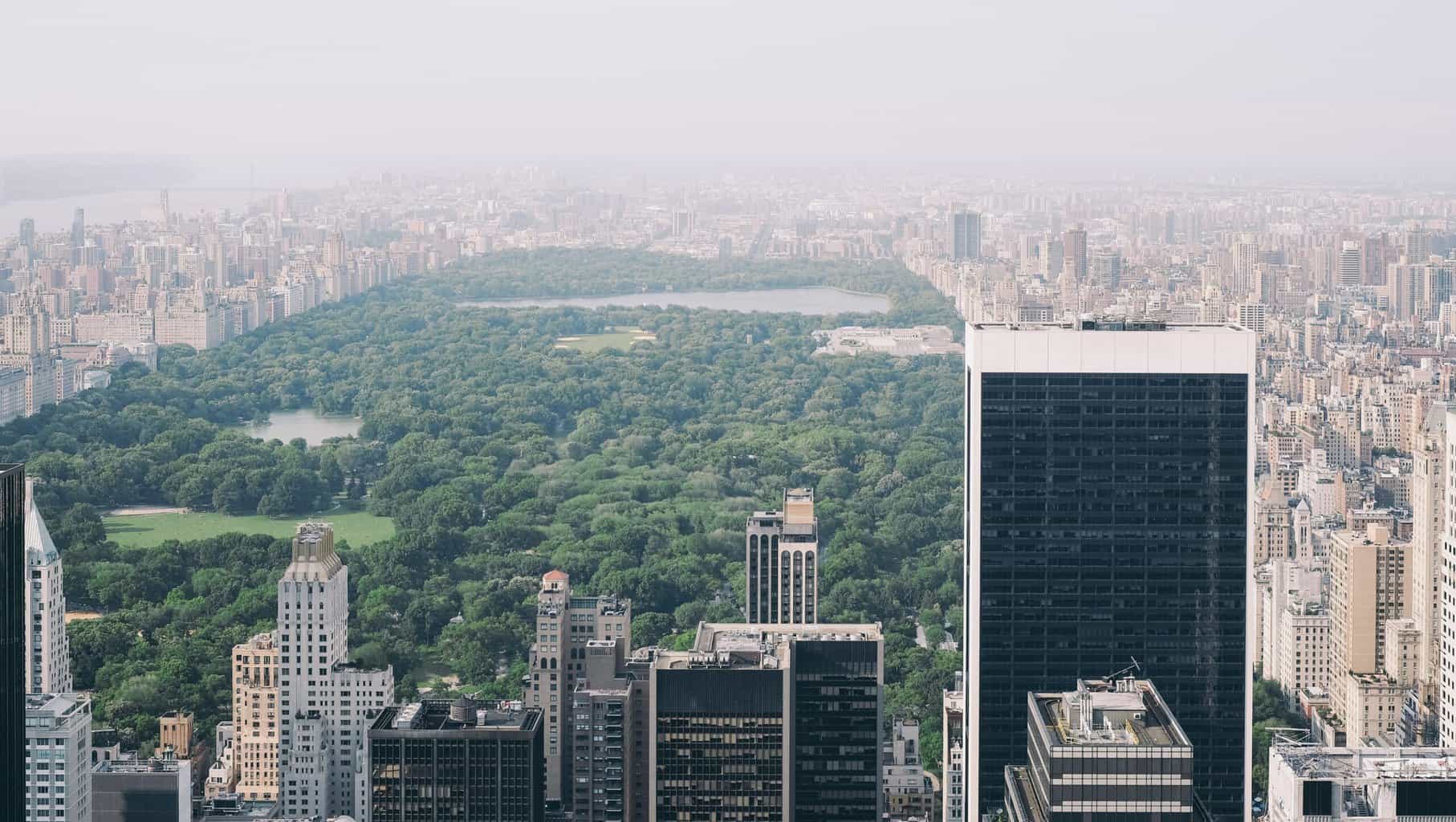
Updated On: November 09, 2023 by Courtney Augello
Central Park, with its rich history, diverse attractions, and cultural significance, stands as a premier destination for tourists from around the world.
This iconic landmark in the heart of New York City offers a multitude of experiences that cater to every visitor’s interests and desires. Central Park’s enchanting landscapes and renowned landmarks captivate the imagination and provide a sanctuary amidst the urban bustle.
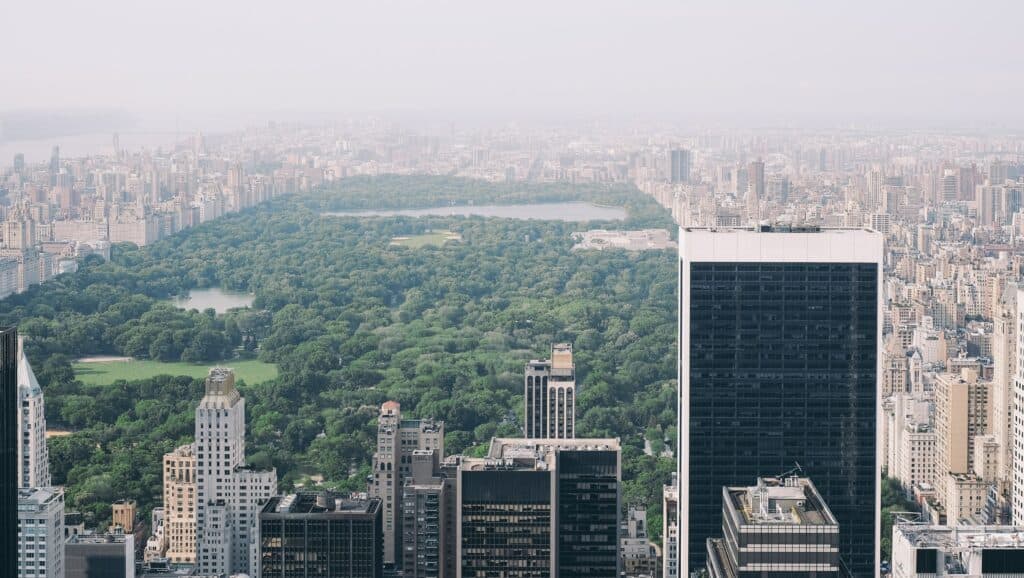
To help you plan the best itinerary for visiting the park, we’ve explored its history, main attractions, and things to do.
Table of Contents
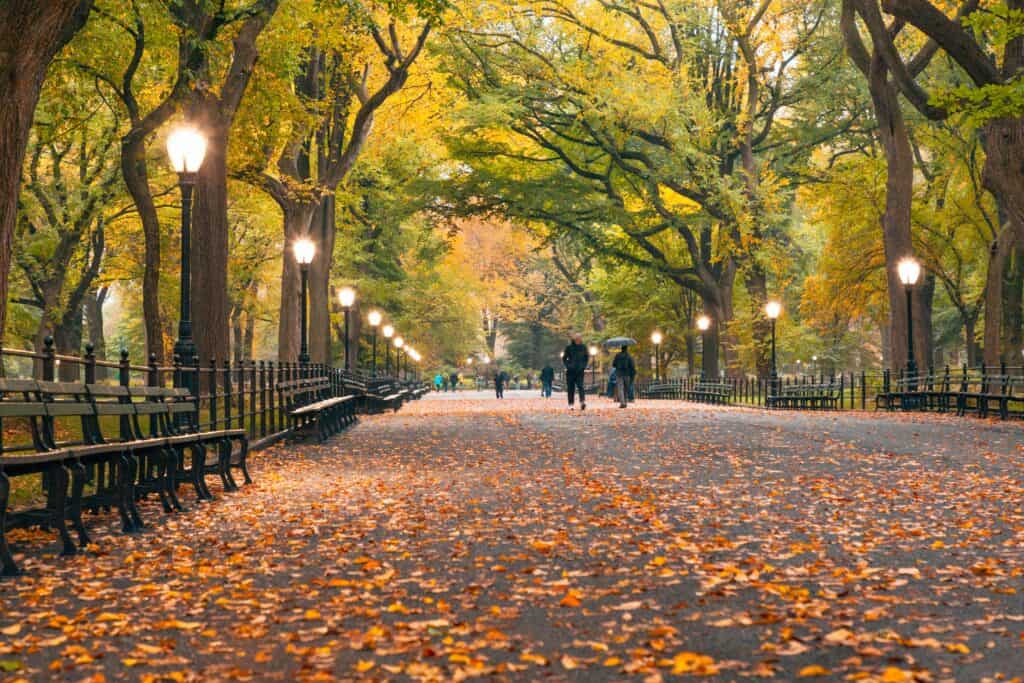
History of Central Park
Creation and Purpose
Central Park was conceived as a response to the growing urbanisation and overcrowding in mid-19th century Manhattan. In 1853, the New York State Legislature authorised the creation of a large public park in the heart of the city, covering an area of 843 acres.
The purpose of Central Park was to provide a natural retreat from the bustling city, offering a respite for New Yorkers to connect with nature and engage in recreational activities. The park was envisioned as a place where people from all walks of life could come together and enjoy the benefits of a well-designed green space.
Architects and Designers Involved
The design and construction of Central Park involved the collaborative efforts of several notable landscape architects and designers. Frederick Law Olmsted and Calvert Vaux, both prominent figures in the field of landscape architecture, won the park’s design competition in 1858.
Olmsted, known for his vision of creating harmonious landscapes, and Vaux, an architect with a keen eye for detail, developed a comprehensive plan that incorporated natural features, artificial structures, and winding paths to create a picturesque setting.
Challenges During Construction
Constructing Central Park was not without its challenges. One of the primary obstacles was the sheer scale of the project. The land that would become Central Park was predominantly rocky and swampy, requiring extensive excavation and levelling.
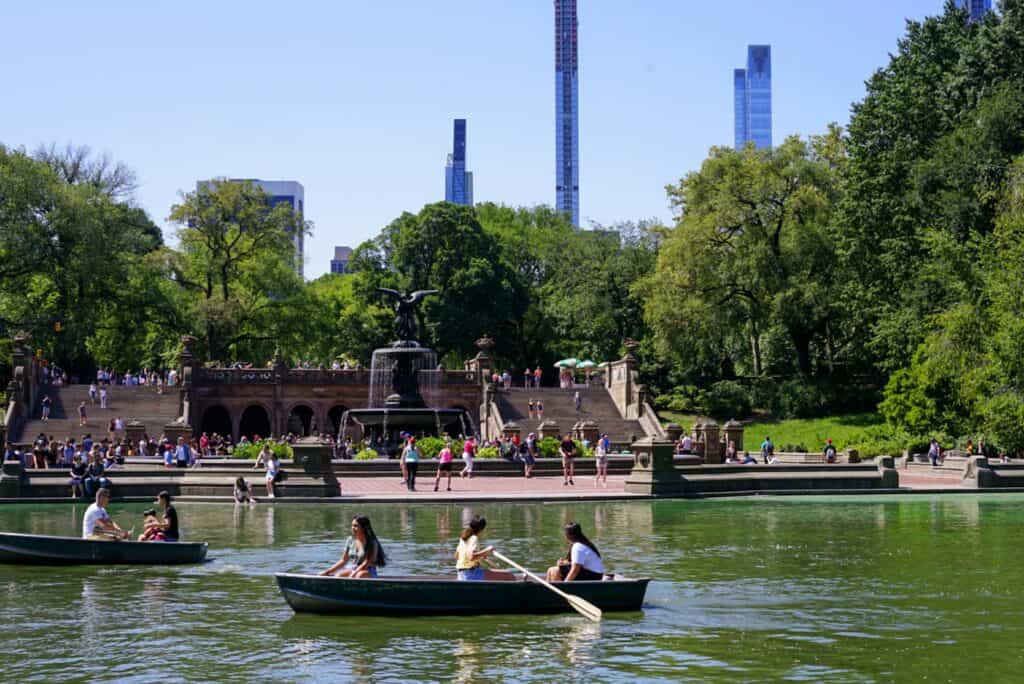
Massive amounts of soil had to be moved, trees planted, and bodies of water created. Additionally, acquiring the necessary land parcels for the park proved to be a complex and time-consuming process involving negotiations, legal battles, and eminent domain proceedings.
Overcoming these challenges required meticulous planning, engineering expertise, and perseverance.
Opening and early reception
After years of planning and construction, Central Park officially opened to the public on October 9, 1858. The park’s opening was celebrated with a grand procession and a speech by President Franklin Pierce.
The initial reception of the park was mixed. Some critics dismissed it as a mere luxury for the wealthy, while others praised its innovative design and the opportunities it provided for leisure and recreation.
As time went on, Central Park became increasingly popular among New Yorkers from all social backgrounds, solidifying its position as a beloved public space and a testament to the vision and foresight of its creators.
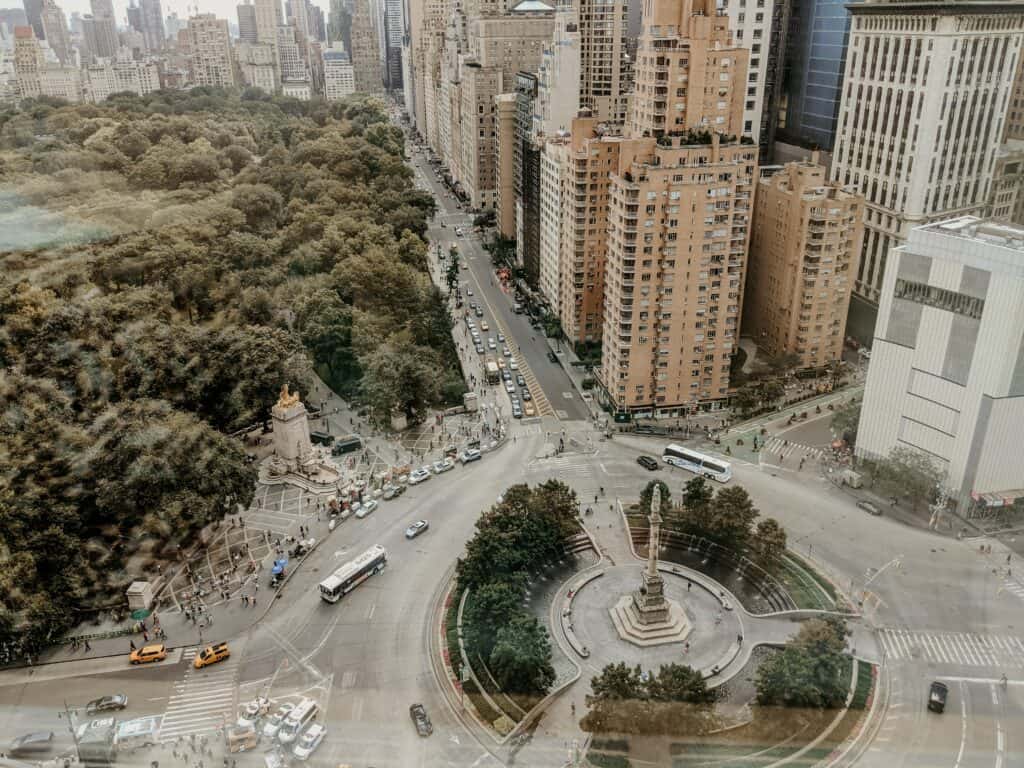
Location and Layout of Central Park
Location within New York City
Central Park is situated in the heart of Manhattan, New York City. It occupies a vast area spanning from 59th Street to 110th Street and from Fifth Avenue to Central Park West.
This prime location places the park in close proximity to numerous iconic landmarks, such as the Museum Mile along Fifth Avenue, the bustling shopping district of Midtown Manhattan, and the vibrant neighbourhoods of the Upper East Side and Upper West Side.
Area and Boundaries
With a total area of 843 acres, Central Park is one of the largest urban parks in the world. The park’s boundaries are defined by its surrounding streets: Central Park South (59th Street) to the south, Central Park North (110th Street) to the north, Central Park West to the west, and Fifth Avenue to the east.
The rectangular shape of Central Park contributes to its well-organized layout and ease of navigation.
Sections and Notable Features
Central Park is divided into several sections, each offering its own distinct features and attractions. The southernmost portion of the park, known as the “Green” or “Greensward,” encompasses the iconic Great Lawn—a vast open space often used for picnics, concerts, and sports activities.
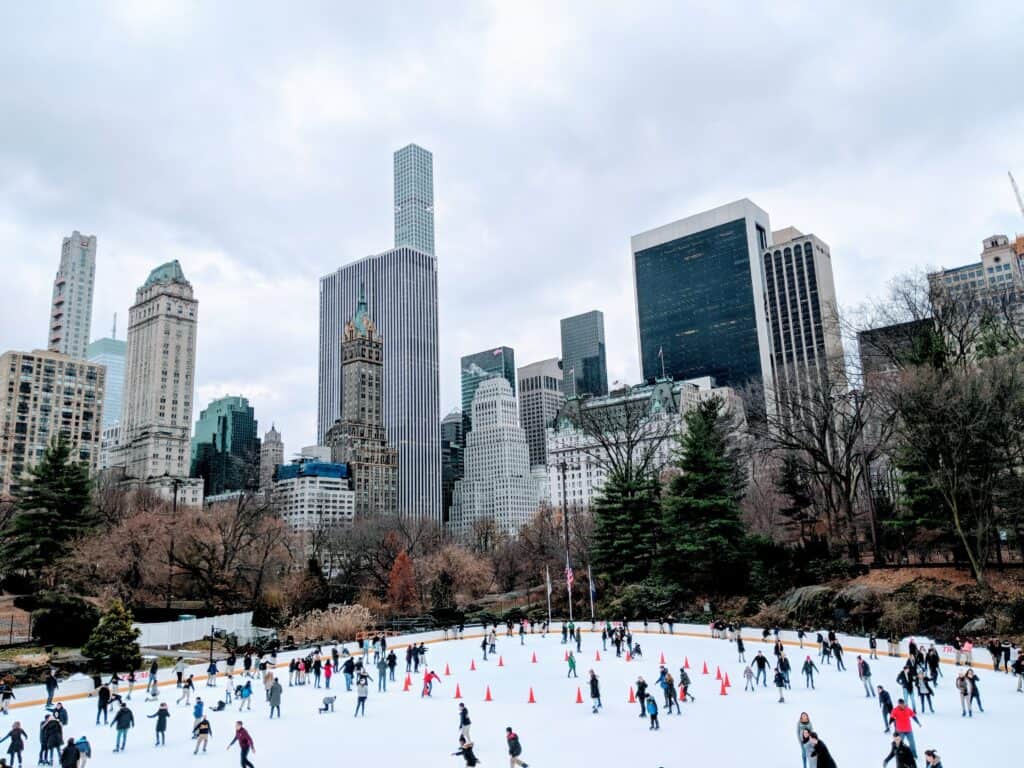
Moving north, visitors encounter the picturesque water bodies of the park, including the Central Park Reservoir and the Jacqueline Kennedy Onassis Reservoir. Near the centre of the park lies the beautiful Bethesda Terrace, featuring the Bethesda Fountain and the Terrace Arcade, which offers stunning views of the lake.
The northern section of Central Park is characterised by the peaceful landscapes of the North Woods, the Harlem Meer, and the Conservatory Garden. Throughout the park, visitors can explore a network of meandering paths and trails, which allow for leisurely walks, jogging, and cycling.
Notable features within the park include the iconic Bow Bridge, the charming Belvedere Castle with its panoramic views, the Central Park Zoo, and the serene Shakespeare Garden. These sections and features collectively contribute to the park’s diverse and captivating layout, offering something for everyone to enjoy.
Attractions and Landmarks
The Mall and Literary Walk
The Mall, located at the southern end of Central Park, is a broad pedestrian pathway lined with magnificent American elm trees.
Known as the “Promenade,” it leads to the Literary Walk, a section adorned with statues of famous writers, including William Shakespeare and Robert Burns. The Mall and Literary Walk provide a serene and picturesque setting, ideal for leisurely strolls, picnics, and enjoying the beauty of nature.
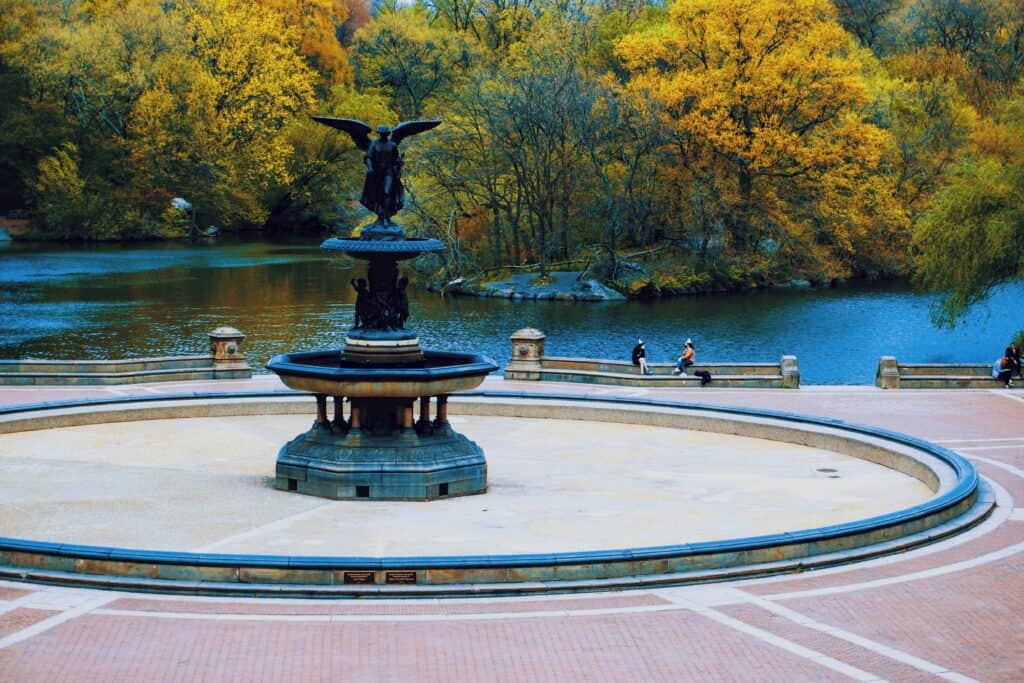
Bethesda Terrace and Fountain
Nestled in the heart of Central Park, Bethesda Terrace is a grand architectural marvel. Its focal point is the Bethesda Fountain, featuring the Angel of the Waters sculpture.
The terrace and fountain provide a stunning backdrop for photos, and the terrace’s arcade offers respite from the sun or rain. This area serves as a popular gathering spot for musicians, artists, and visitors seeking a tranquil atmosphere.
The Central Park Zoo
Situated in the southeast corner of Central Park, the Central Park Zoo offers a delightful wildlife experience in the heart of the city.
It is home to a diverse range of animal species, including penguins, sea lions, snow leopards, and red pandas. The zoo also features an interactive children’s zoo, providing educational and entertaining experiences for visitors of all ages.
The Great Lawn and Sheep Meadow
The Great Lawn and Sheep Meadow are expansive grassy areas within Central Park that serve as gathering spaces for picnics, sports activities, and outdoor concerts.
The Great Lawn, located in the centre of the park, spans 55 acres and hosts major events, such as music festivals and Shakespeare in the Park performances. Sheep Meadow, located just southwest of the Great Lawn, offers a peaceful retreat with its lush green expanse and panoramic views of the surrounding cityscape.
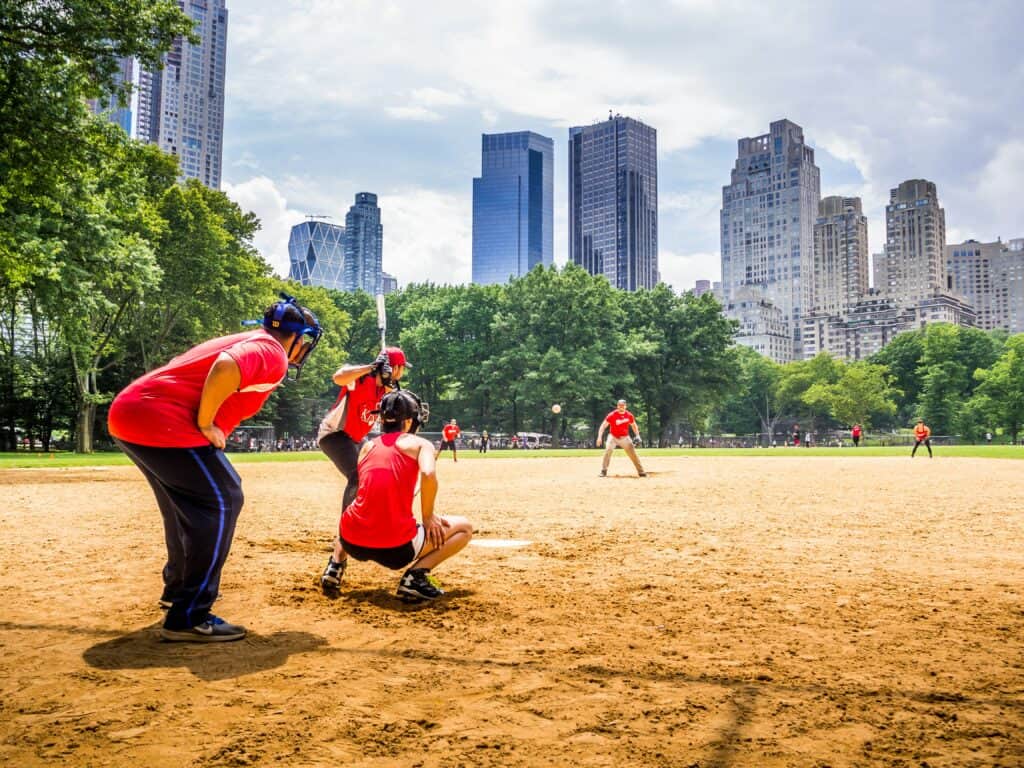
Belvedere Castle
Perched atop Vista Rock in Central Park, Belvedere Castle offers breathtaking views of the park and its surroundings.
Originally designed as a decorative structure, the castle now houses the Henry Luce Nature Observatory, which provides educational exhibits on the park’s natural history. Visitors can climb to the castle’s top for stunning vistas and a unique perspective on the park’s landscapes.
The Central Park Carousel
The Central Park Carousel, located near the park’s southeast corner, is a beloved attraction that has delighted visitors since 1871.
This vintage carousel features intricately carved horses and offers a nostalgic and whimsical ride for children and adults alike. Its charming design and timeless appeal make it a must-visit spot for those seeking a touch of nostalgia in the park.
Strawberry Fields and the Imagine mosaic
Strawberry Fields, a tranquil memorial located near the park’s west side, pays tribute to the legendary musician John Lennon of The Beatles.
The memorial features the iconic Imagine mosaic, which bears the word “Imagine” in tribute to Lennon’s famous song. It serves as a peaceful space for reflection and remembrance, attracting visitors from around the world who come to pay their respects.
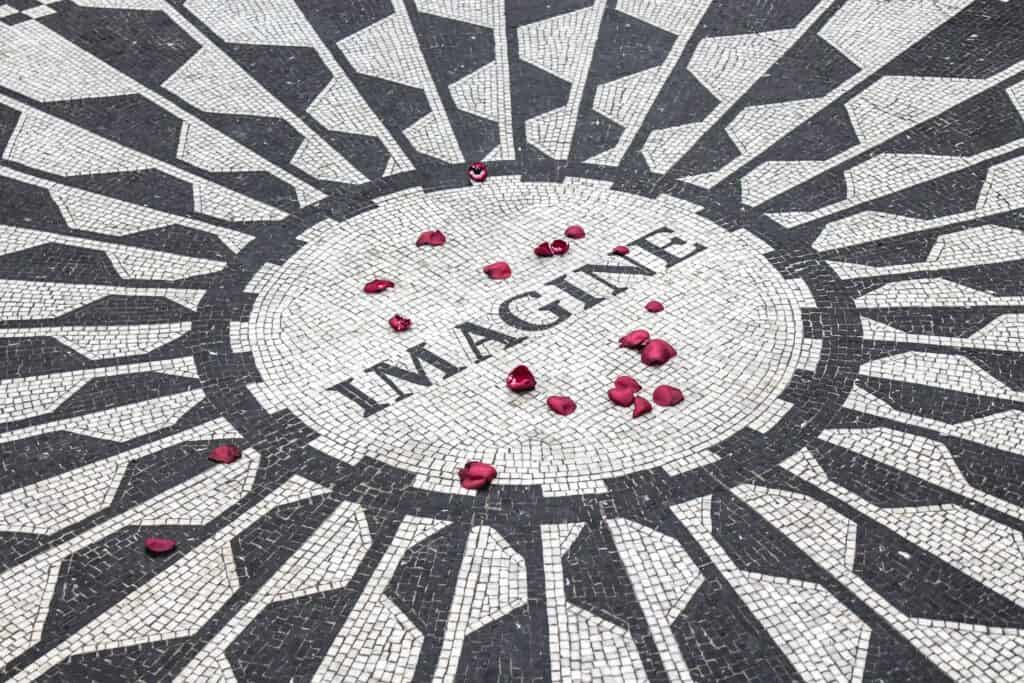
Other notable attractions
Central Park is teeming with other notable attractions that captivate visitors. These include the Conservatory Garden, a meticulously landscaped formal garden and the Alice in Wonderland sculpture, a whimsical bronze statue loved by children.
The Bow Bridge, an iconic cast-iron bridge offering stunning views of the lake, and the Wollman Rink, a popular ice-skating rink during the winter months, also draw in crowds. These and many other attractions contribute to the diverse and enchanting experiences that Central Park offers.
Recreational Activities
Walking, Jogging, and Cycling
Central Park offers an extensive network of paths and trails that cater to walkers, joggers, and cyclists. The park features designate pedestrian-only paths, as well as separate lanes for cyclists.
These pathways wind through scenic landscapes, providing a serene escape from the bustling city streets. Whether it’s a leisurely stroll, a brisk jog, or a bike ride, visitors can enjoy the beauty of nature while engaging in healthy exercise within the park.
Boating and Fishing
Several bodies of water within Central Park provide opportunities for boating and fishing. Visitors can rent rowboats or paddleboats to explore the park’s serene lakes, such as the Central Park Reservoir or the Jacqueline Kennedy Onassis Reservoir.
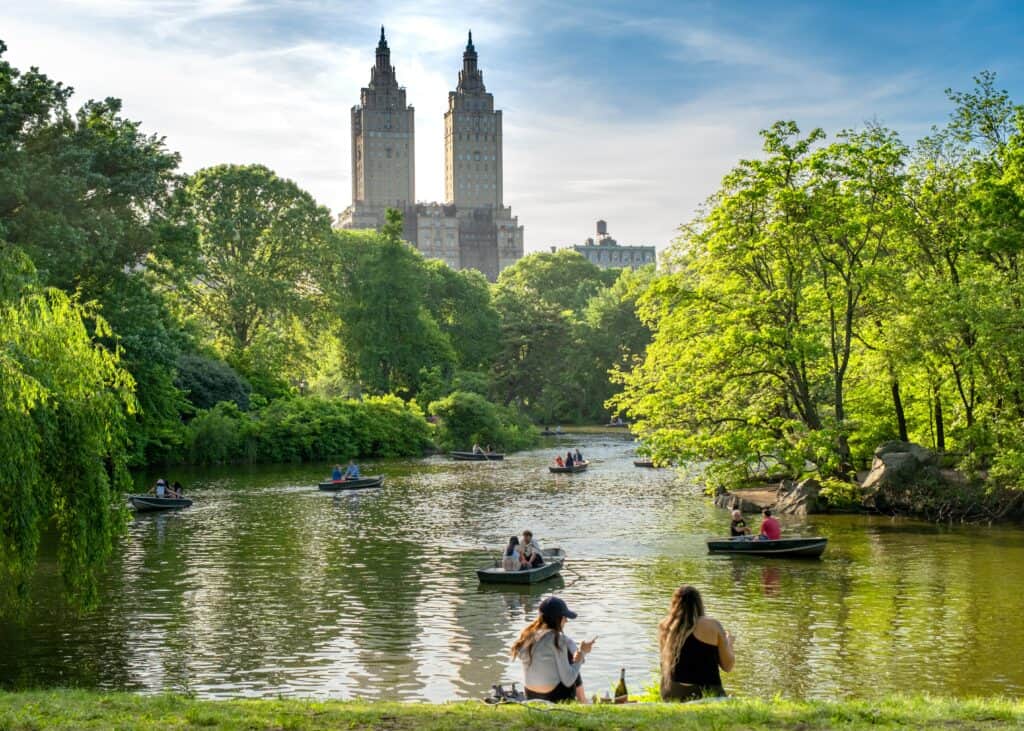
Fishing enthusiasts can cast their lines and try their luck catching fish in designated areas of the park’s lakes. These activities offer a unique and tranquil way to enjoy the park’s natural surroundings.
Sports
Central Park offers numerous sports fields and courts for visitors to engage in various athletic activities. The park features baseball fields, football pitches, and basketball courts, providing spaces for organised games, casual matches, and recreational play.
Tennis enthusiasts can enjoy the park’s well-maintained tennis courts, which are available for public use. These sports facilities foster a sense of community and provide opportunities for physical fitness and friendly competition.
Picnic Areas
Central Park provides ample space for picnics and outdoor gatherings. There are designated picnic areas scattered throughout the park, equipped with tables, benches, and lush green lawns.
Visitors can relax, savour a meal, and soak up the sun in these idyllic settings. Additionally, certain areas of the park offer barbecue facilities, allowing visitors to grill their favourite foods and enjoy a delightful al fresco dining experience in the heart of the city.
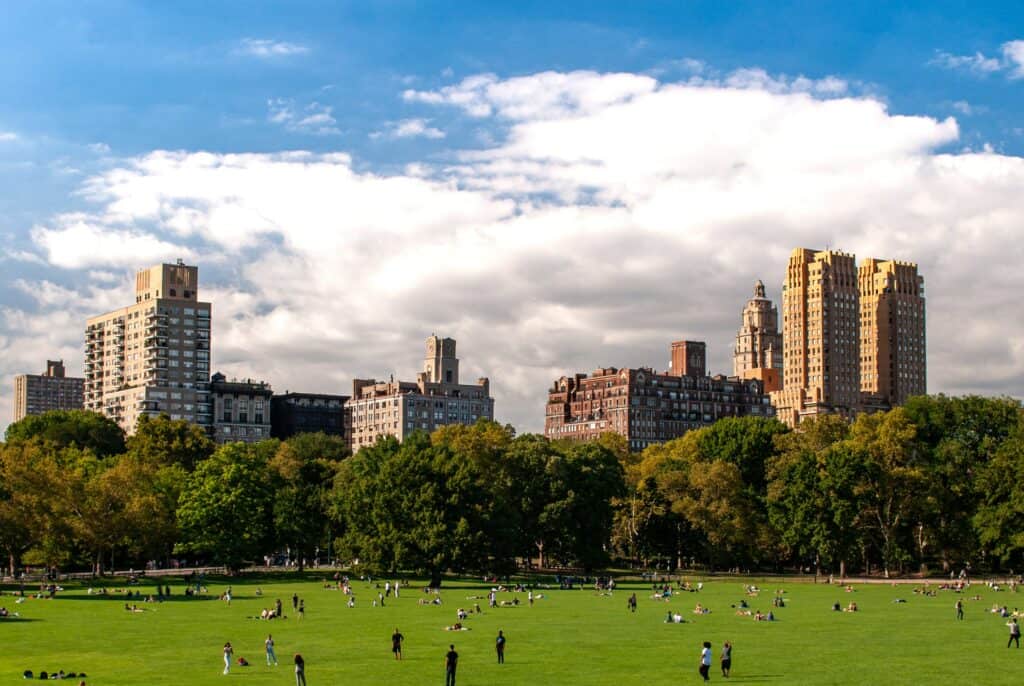
Playgrounds
Central Park boasts several playgrounds and amusement areas that cater to children and families. These well-designed and safe spaces offer a range of activities, including climbing structures, swings, slides, and sandboxes.
The Tisch Children’s Zoo, located within the park, provides interactive exhibits and opportunities for young visitors to engage with animals. Families can also enjoy the Victorian Gardens amusement park, which sets up during the summer season, offering rides, games, and entertainment for children of all ages.
Cultural Significance
Popular Culture
Central Park has played a prominent role in popular culture, making appearances in numerous movies, TV shows, and works of literature.
It has served as a picturesque backdrop for iconic scenes, symbolising the allure and vibrancy of New York City. Films like “When Harry Met Sally,” “Home Alone 2: Lost in New York,” and “Elf” have featured memorable Central Park moments.
TV shows like “Friends” and “Gossip Girl” have showcased the park’s beauty and provided a sense of authenticity to their New York City settings. Additionally, Central Park has served as a source of inspiration for authors, including J.D. Salinger, who featured the park prominently in his classic novel “The Catcher in the Rye.”
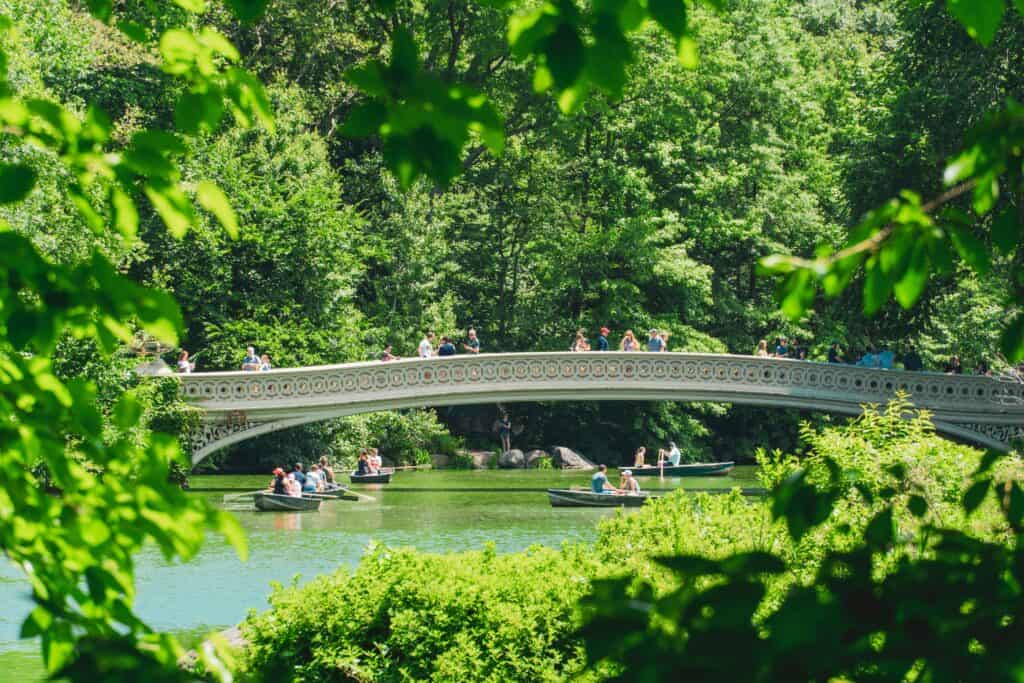
These cultural references have further cemented Central Park’s status as an iconic and recognisable symbol of urban life.
Concerts and Performances
Central Park has a long-standing tradition of hosting concerts and performances that have captivated audiences. The park’s Great Lawn and other designated areas have been the venues for remarkable musical events.
The most renowned of these concerts was the 1980 “Concert for Central Park” by Simon & Garfunkel, which attracted an estimated 500,000 attendees.
Central Park continues to be a sought-after location for major music festivals, including the annual “Global Citizen Festival” and the “SummerStage” series, which feature performances by renowned artists from diverse genres.
These concerts and performances showcase the park’s ability to bring people together through the universal language of music and serve as platforms for social causes and cultural enrichment.
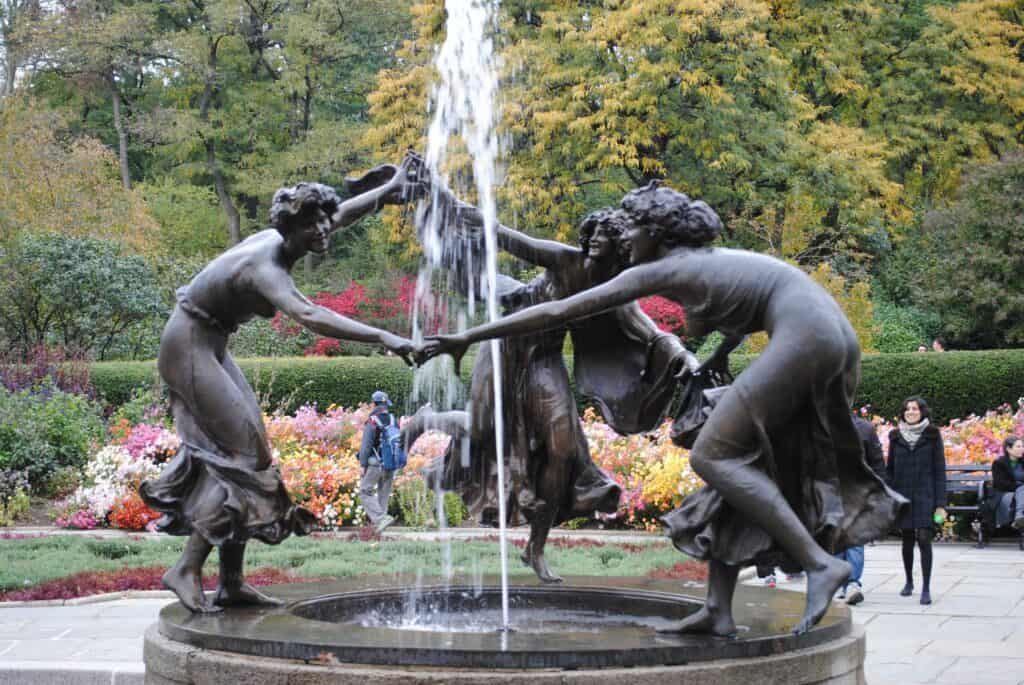
Public Art and Sculptures
Central Park boasts a remarkable array of public art, adding to its cultural significance. The park features a diverse collection of sculptures, monuments, and installations that pay tribute to historical figures, artistic achievements, and moments of inspiration.
The statues of literary figures, like William Shakespeare, and the iconic Alice in Wonderland sculpture contribute to the park’s enchanting atmosphere. Public art in Central Park adds aesthetic value and encourages cultural and intellectual engagement, making the park a living canvas that merges nature and artistic expression.
The Central Park Conservancy
The Central Park Conservancy plays a crucial role in preserving and enhancing the park’s cultural heritage. Founded in 1980, the Conservancy is a nonprofit organisation dedicated to the park’s care, restoration, and maintenance.
It works tirelessly to preserve the park’s natural landscapes, architectural features, and cultural assets for future generations. The Conservancy’s initiatives include landscape restoration, tree care, environmental stewardship, and educational programs.
Through its tireless efforts, the Conservancy has been instrumental in maintaining Central Park as a beloved cultural landmark, fostering an appreciation for its historical significance and ecological diversity.
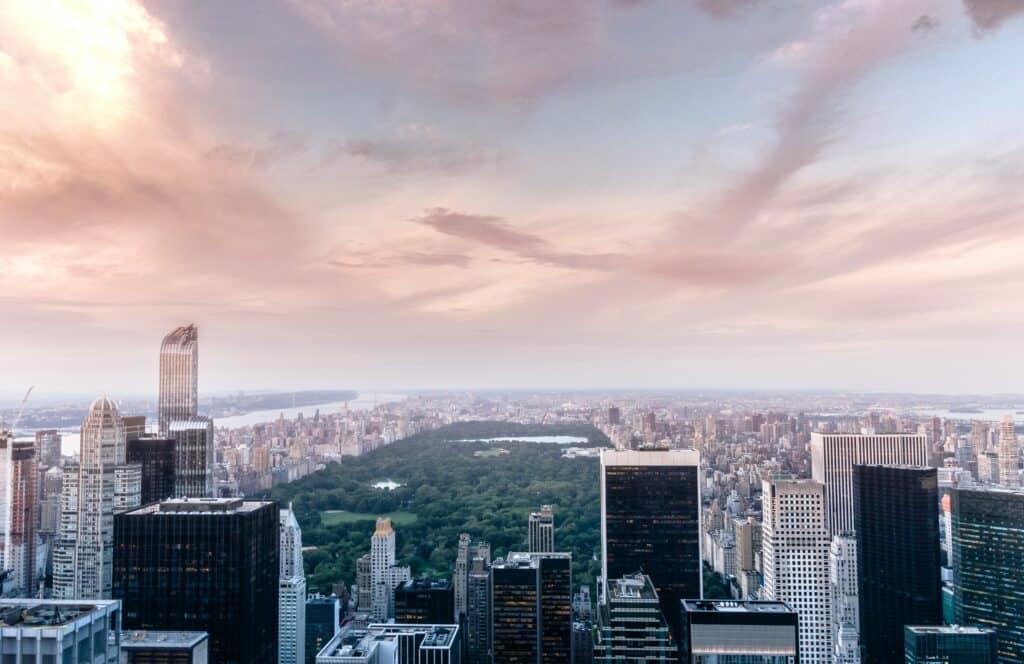
Central Park is a Serene Area to Explore
Central Park’s tourist attractions offer a wealth of experiences that leave a lasting impression on tourists. As visitors immerse themselves in the park’s natural and cultural wonders, they become part of a narrative that has unfolded for over a century and a half.
As the park continues to inspire, preserve, and provide moments of respite and joy, it is our responsibility to cherish and protect this remarkable oasis in the heart of the city. Central Park stands as a testament to the harmonious coexistence of nature and culture, inviting visitors to explore, discover, and create memories.
If you’re planning to visit New York, check out these 15 Great Things to do in Long Island.


